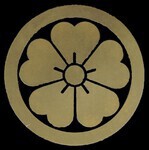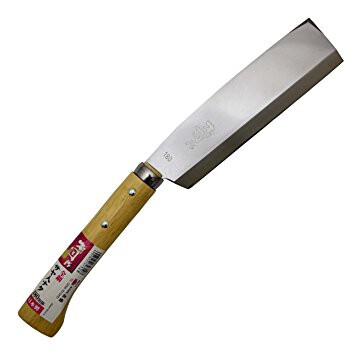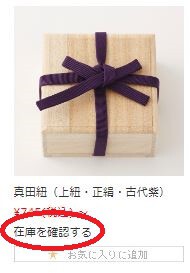-
Posts
3,242 -
Joined
-
Days Won
99
Everything posted by Guido
-
I’m pretty sure he does , the Japanese description says 喜多川 (Kitagawa) + kaō.
-

Uk Legislation Raises Its Head Again
Guido replied to IanB's topic in General Nihonto Related Discussion
That's a great idea! Germany took in the most refugees (by far), and the crime rate is now the lowest since 1992. IOW, if Germany lets in all the immigrants, it will become even safer, and the UK crime rate goes way up. Or maybe it doesn't work that way ... -
Yes, he is: http://www.sword-masamune.com/en/info.html
-
Yes, many of us know that feeling ... I've been to the Sano Bijutsukan many times, and agree that it's well worth a visit! http://www.sanobi.or.jp/eng/
-
The papers say 鉈に梅枝透 (nata ni umegae sukashi) – nata and plum tree twig. Btw, I recently bought this beauty: a signed kubikiri, hachō 18 cm! Those idiots at the home center thought it’s a gardening tool, so I got it really cheap!
-
Not 時伐, but 時代 (jidai); i.e. period / age. The kanji above Higo is 極 (kyoku / goku), but I'm not sure what that means in this context. Maybe "highest quality"?
-
Since the introduction of consumption tax in Japan in April of 1989, there has been much confusion among businesses about the system. Without going into all the details, if you want to buy a sword tax free while in Japan for less than 6 months, and want to take the sword with you when leaving Japan, the vendor has to be a so called “designated store”, i.e. registered for tax exemption with the Ministry of Finance. Exports (by shipping abroad) are generally exempted from taxation. However, smaller shops – like sword dealers – are not familiar with the procedures, and often will refuse to sell tax free. There’s not much you can do about that: once the tax is collected, it has to be paid to the government, there’s no reimbursement after that. As to discounts: 10% (and then maybe rounded to an even amount) is usually the most you can get as a first-time customer.
-

Japanese Box Cord/tap Dealers In Tokyo
Guido replied to Chishiki's topic in General Nihonto Related Discussion
http://www.hakoyoshi-netshop.com/SHOP/g14845/list.html If you click on the link I marked in the example below, you can chose different widths and lengths - 1 or 30 meters: -
Blades and koshirae are judged independently of each other, there are no "package papers" for both as a unit.
-

Juyou Hizen Sumi Harima Kami Fujiwara Tadakuni (肥前住播磨守藤原忠国)
Guido replied to Japan auctions's topic in Sold Archive
May I ask what the criteria are to qualify as a buyer? -
And there I was, so proud to have much better vision after getting my new glasses ... ... but this is what I'm still seeing :
-
Is the third one orikaeshimei? In that case I haven‘t seen anything else than (kind of half) kiri, no matter when it was done.
-
Not much to add. Mr. Tanobe confirmed yesterday that – as a general rule – Tenshō-suriage is kuri-jiri (or even emulating the original nakago), and Keichō-suriage kiri-jiri. However, he made a point of the need to examine the rust and yasurime carefully, since later swords were sometimes shortened in this manner to give the imperssion that they are older than they actually are. My own observation is that both methods are more carefully done, with more attention to giving it a pleasant appearance, than many of the hacksaw-like shortenings we often see.
-
I just found out that I actually have that issue; the focus is on gimei, that's why I didn't make the connection. Anyhow, the reference to suriage is found on page 33: (non-professional translation by yours truly )
-

Descriptive Mei Masahide On Aoi
Guido replied to Vermithrax16's topic in Auctions and Online Sales or Sellers
The way I read it, he thinks that practitioners of kendō etc. might like this masterpiece (because of the inscription), not that he recommends it for actual use in martial arts. -
Arnold, would you mind telling me which one? It's not too difficult getting back issues here in Japan, and I'll try to buy one. Also, coincidentally I'm meeting with Mr. Tanobe tomorrow, and will report back if you/the message board have any specific questions you'd like me to ask him.
-
Sounds like an interesting project for you, Dave, but - and please don’t get me wrong – isn’t that like putting custom paint, hand-sewn leather seats, and low-profile tires on a Dacia? Again, I don’t mean any offense, but I wonder why they would want to do that. Close-ups in a movie?
-
FWIW: this is the nakago of a Nambokuchō period sword I used to own – pretty much everybody said it’s Keichō-suriage.
-
I've seen their name quite often in jidai-geki (period drama) credits on tv here in Japan (yes, I'm one of those strange people who actually watch the credits; the wigs are always made by Yamazaki Katsura, btw. ). I've also seen their armor up close. The plates are made of sheet metal, probably stamped out with some minor hand work. They also use spray paint, not urushi. There is of course no way around doing the lacing traditionally, and that's probably why they are as expensive as they are. The armor looks nice - especially on tv and the movies - but it doesn't come close to period armor. For 35,000 US$ you should be able to get a high class, antique suit of armor. Just my 2 Cents.
-

Tokubetsu Juyo Exhibition
Guido replied to BIG's topic in Sword Shows, Events, Community News and Legislation Issues
The North Americans did really well: katana Takagi Sadamune – Darcy Brockbank katana Shizu – Ted Tenold naginata-naoshi Ichimonji – Mike Yamasaki daishō-koshirae - Darcy Brockbank -
Which, for me, is an idication that this was done intentionally. What are the odds of the entire inlay coming off on reversed elements on both sides of the tsuba? The lighting is probably off, but to me it looks like the real deal. Btw, I would describe the rim as uchikaeshi-mimi, not dote-mimi - and both are seen on many types of tsuba, not only katchū-shi.
-

Samurai Art Expo Utrecht
Guido replied to paulb's topic in Sword Shows, Events, Community News and Legislation Issues
Although I have no shortage of possibilities to see excellent swords & fittings here in Japan, I'd love to attend - if it only was for meeting NMB members, and to learn what kind of items are collected by Europeans. Alas, no way to make it there ... I wish all attendees a great time, and success to the organizers! -

Please Help To Translate The Characters On My Mirror
Guido replied to Gordon Sanders's topic in Translation Assistance
I'm a little late to this thread, but agree with this reading, Fujiwara Masashige. 天下一 (tenkaichi), first under heaven, is an inscription that was used by some craftsmen/artists to indicate that they were the best at their field. So much for modesty ...







